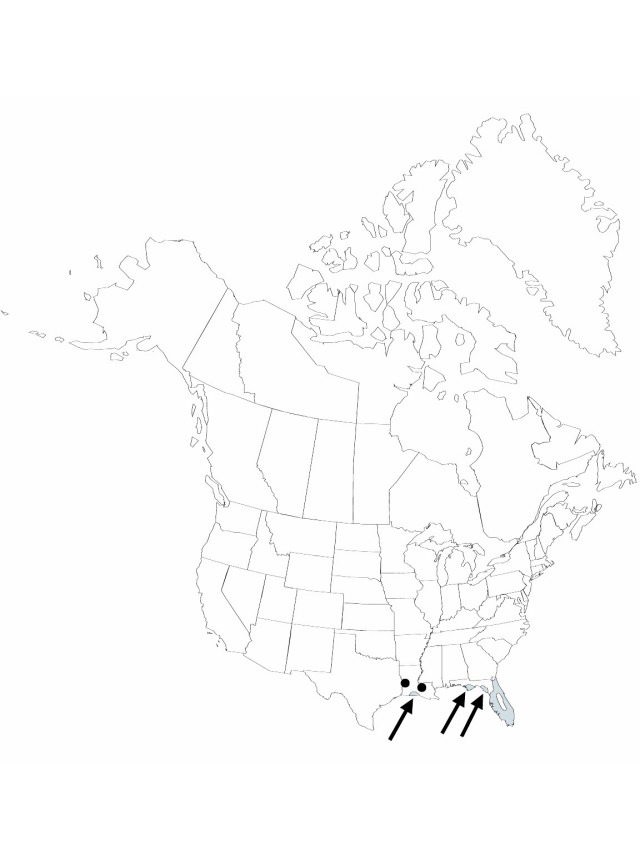Difference between revisions of "Thalia geniculata"
Sp. Pl. 2: 1193. 1753.
FNA>Volume Importer |
imported>Volume Importer |
||
| (3 intermediate revisions by 2 users not shown) | |||
| Line 12: | Line 12: | ||
|name=Thalia divaricata | |name=Thalia divaricata | ||
|authority=Chapman | |authority=Chapman | ||
| + | |rank=species | ||
}} {{Treatment/ID/Synonym | }} {{Treatment/ID/Synonym | ||
|name=Thalia trichocalyx | |name=Thalia trichocalyx | ||
|authority=Gagnepain | |authority=Gagnepain | ||
| + | |rank=species | ||
}} {{Treatment/ID/Synonym | }} {{Treatment/ID/Synonym | ||
|name=Thalia welwitschii | |name=Thalia welwitschii | ||
|authority=Ridley | |authority=Ridley | ||
| + | |rank=species | ||
}} | }} | ||
|hierarchy=Marantaceae;Thalia;Thalia geniculata | |hierarchy=Marantaceae;Thalia;Thalia geniculata | ||
| Line 47: | Line 50: | ||
-->{{#Taxon: | -->{{#Taxon: | ||
name=Thalia geniculata | name=Thalia geniculata | ||
| − | |||
|authority=Linnaeus | |authority=Linnaeus | ||
|rank=species | |rank=species | ||
| Line 61: | Line 63: | ||
|publication year=1753 | |publication year=1753 | ||
|special status= | |special status= | ||
| − | |source xml=https:// | + | |source xml=https://bitbucket.org/aafc-mbb/fna-data-curation/src/2e0870ddd59836b60bcf96646a41e87ea5a5943a/coarse_grained_fna_xml/V22/V22_381.xml |
|genus=Thalia | |genus=Thalia | ||
|species=Thalia geniculata | |species=Thalia geniculata | ||
Latest revision as of 20:31, 5 November 2020
Plants 1–3.5 m. Leaves: basal 2–6, cauline 0–1(–2); sheath green or occasionally red-purple, glabrous; petiole green or occasionally red-purple, glabrous; pulvinus caramel-colored, olive-green, or red-purple, 0.3–2.5 cm, glabrous; blade ovate to narrowly ovate, 19–60 × 4–26 cm, firm, stiff-papery, base rounded to subtruncate, apex acute to acuminate, occasionally obtuse with acuminate tip, abaxial surface green, faintly pruinose, glabrous, adaxial surface glabrous. Inflorescences lax, broadly spreading to pendeant, paniclelike array, up to ca. 0.6 × 1 m; scapes 0.8–2.5 m; rachis not pruinose; internodes 5–20 mm; bracts not pruinose, green or streaked or tinged with purple, narrowly ovate, 1.3–2.8 cm, herbaceous, sparsely to densely villous. Flowers: sepals 0.5–2 mm; outer staminode faint lavender to purple, 15–20 × 5–10 mm; callose staminode base yellow, apex purple, apical rim, reflexed, petal-like. Fruits ellipsoid, 9–12 × 6–7 mm. Seeds smooth dark brown to black, ellipsoid, 7–10 × 5–6 mm. 2n = 18 (Senegal) 2n = 26 (in cultivation).
Phenology: Flowering summer–fall (late Jun–Dec); fruiting summer–winter (Aug–Jan).
Habitat: Lowlands in ponds, wet roadside ditches, swamps, marshes, cypress sloughs, margin of streams or lakes, full sun, often in regions with pronounced dry season
Distribution

Fla., La., Mexico, West Indies, Central America, South America (to Argentina and Paraguay), w Africa.
Discussion
This species has the widest distribution known for any of the Marantaceae, occurring in both Africa and the Americas. Because of the marked lack of variation among the African populations, it is believed that its occurrence in west Africa was a historically recent, probably accidental, introduction (L. Andersson 1981b). The variation in pubescence and bract size within the American continent has been used as the basis for describing additional species or varieties (L. Andersson 1981b). Populations of Thalia geniculata with a striking red-purple coloration on the petiole, sheath, and pulvinus were described as T. geniculata f. rheumoides Shuey (A. G. Shuey 1975) . Such homogeneous populations are to be expected in a mainly selfing species.